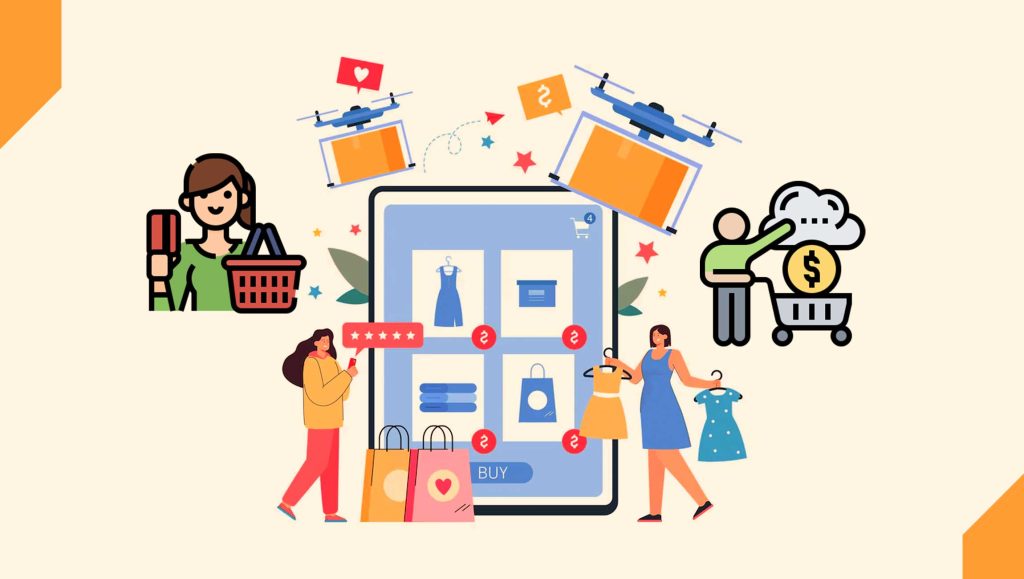Global retail is experiencing a paradigm shift, primarily driven by the burgeoning sector of online shopping. In recent years, this digital marketplace has not only expanded its reach but also profoundly transformed consumer behavior and retail strategies. This article aims to delve into the latest reports and studies that shed light on the evolving patterns of online shopper behavior.
These insights are not just academic; they hold substantial relevance for businesses and marketers aiming to navigate the complexities of the digital market. Understanding these trends is equally crucial for consumers, who are increasingly turning to online platforms for their shopping needs. This exploration is more than just a study of statistics; it’s a window into the future of commerce.
Global Shifts in Online Shopping Habits
A closer look at recent reports reveals significant global shifts in online shopping habits, painting a picture of an increasingly digital world. One notable trend is the increased frequency of online purchases. Consumers who once reserved online shopping for occasional or specific needs are now turning to digital platforms for regular purchases. Studies suggest a marked increase in monthly and even weekly online shopping activities, indicating a shift towards e-commerce as a primary shopping medium.
Simultaneously, there has been a change in average spending during online shopping. Initially, smaller, low-risk items dominated online shopping carts, but recent data shows a growing confidence among consumers to make larger and more significant purchases online. This change is partly fueled by improved consumer trust in e-commerce platforms and more robust return and exchange policies.
There is also a noticeable shift in peak shopping hours and seasons. Traditionally, holiday seasons accounted for a significant spike in online shopping. However, recent trends indicate a more evenly distributed shopping pattern throughout the year, with occasional peaks aligning with global sale events like Black Friday or Cyber Monday. This shift can be attributed to the constant availability of discounts and deals online, diminishing the exclusivity of traditional peak shopping seasons.
Read More: SalesTechStar Interview with Patrick Finn, VP of Sales at Cloudflare
Emerging Preferences and Product Categories
In the evolving landscape of e-commerce, consumer preferences, and popular product categories are undergoing a significant transformation. This shift reflects deeper changes in societal values and technological advancements.
1. Surge in Certain Product Categories
-
- Electronics: There’s a noticeable increase in online sales of electronics, driven by the need for up-to-date gadgets and home office equipment.
- Fashion: Online fashion retail has seen a boom, particularly in fast fashion and luxury brands, as consumers seek convenience and variety.
- Groceries: The pandemic has catalyzed the online grocery shopping trend, making it a mainstay for many households.
2. Evolving Consumer Preferences
-
- Ethical Consumerism: A growing number of consumers are opting for brands that demonstrate social responsibility and ethical practices.
- Local Brands: There’s a rising preference for local and artisanal products driven by a desire to support community businesses.
- Sustainable Products: Demand for eco-friendly and sustainable products is on the rise, reflecting a heightened environmental consciousness among consumers.
Impact of Technology and Social Media
Technological advancements and social media have significantly influenced online shopping, altering how consumers discover and interact with products and brands.
1. Influence of Advanced Technologies
-
- Augmented Reality (AR): AR is revolutionizing the shopping experience, allowing consumers to virtually try products, from clothing to furniture, before purchasing.
- Artificial Intelligence (AI): AI is enhancing personalized shopping experiences through tailored product recommendations and improved customer service interactions.
2. Role of Social Media and Influencers
-
- Influencer Marketing: Influencers are increasingly shaping consumer decisions, with their endorsements driving sales in various product categories.
- Social Commerce: Platforms like Instagram and Facebook have become shopping destinations, with integrated purchasing features making shopping seamless and interactive.
- User-Generated Content: Customer reviews and unboxing videos on social media platforms significantly influence buying decisions, emphasizing the importance of authenticity in marketing strategies.
Challenges and Adaptations in Online Shopping
In the realm of online shopping, consumers and retailers face a myriad of challenges. Cybersecurity remains a paramount concern, with the increase in online transactions leading to heightened risks of data breaches and fraud. Retailers are countering these threats by investing in robust security protocols and encryption technologies.
Another challenge lies in the complexities of delivery logistics, especially with the surge in online orders. Companies are responding by optimizing their supply chain and employing advanced tracking systems for more efficient delivery processes. Additionally, return policies have been a critical issue for both consumers and retailers.
The solution has been found in more customer-friendly policies and streamlined return processes, enhancing overall customer satisfaction. Innovations like AI chatbots for customer service and drone delivery systems are also being explored to refine the online shopping experience further.
Conclusion
Recent reports on global online shopper behavior reveal a dynamic and rapidly evolving e-commerce landscape. These trends, from the rise in mobile commerce to the growing influence of social media, highlight the critical importance of adaptability and innovation in the online retail sector. As consumer preferences and technologies continue to evolve, the need for businesses to stay agile and forward-thinking becomes increasingly vital for success in the digital marketplace.
Read More: Adoption of B2B e-commerce Platforms and their Impact on Traditional Sales channels





















